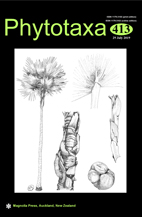Abstract
Beauveria is one of the most prominent genus within entomopathogenic fungi. This genus is an asexually reproducing fungus which includes morphologically indistinguishable species. The delimitation of species in Beauveria is controversial due to the lack of distinctive taxonomic features and the extensive overlap in the shape and the sizes of conidia. Moreover, cryptic species have been revealed in Beauveria using molecular tools making species identification a challenge within the genus. Since 1990s, the development of reliable molecular tools based on DNA sequences has become increasingly useful for species delineation and recognition allowing a best application of genealogical concordance phylogenetic species recognition. Actually, specimen’s taxonomy becomes tightly dependent on DNA based-data. Single-gene based on the internal transcribed spacers (ITS) region is the common barcoding DNA, but has reached its limit in delimiting closely related species, including Beauveria species. With the advances in sequencing technology, the focus has been shifted from single to multiple locus data to identify fungal isolates adapting genealogical concordance phylogenetic species recognition (GCPSR) criterion. Multi-locus approach has been increasingly more applied in assigning fungal samples to a given species and significantly improves Beauveria taxonomy raising the number of Beauveria species to heighten species.

